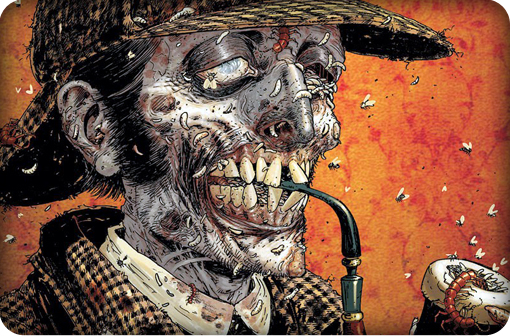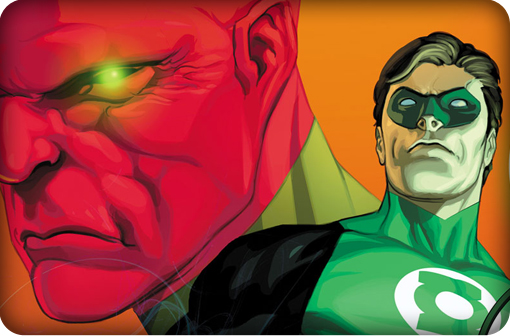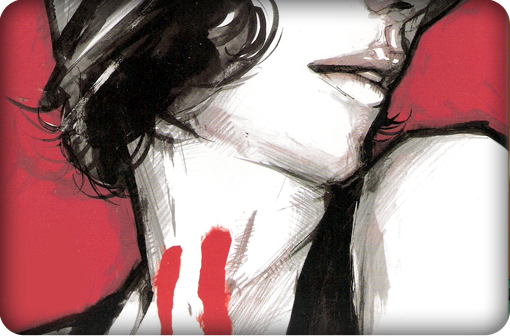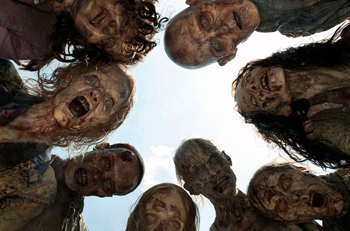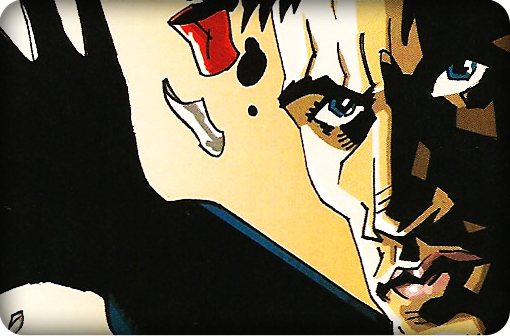
Review: Victorian Undead – Sherlock Holmes vs. Zombies / Writer: Ian Edgington / Artist: Davide Fabbri / Publisher: Titan Books
Sherlock Holmes is back in vogue on both TV and in films but he has never stopped sleuthing. Zombies continue to much their way through endless limbs on paper and on the big screen. In fact they seem to be a staple diet of horror films. Then again, the current trends tend to combine a love for 19th century novels with macabre monsters. Jane Austen would be turning in her grave if not climbing out of it if she knew her work parodied and gothicised in Pride and Prejudice and Zombies as well as Sense and Sensibility and Sea Monsters. Ian Edgington (Stickleback) is the writer of this volume of the collected series that playfully pitches our deer-stalker detective into the centre of this cadaverous chaos and crafts a deviously entertaining case for him to solve.
Opening in 1854, a strange meteor is seen over the skies of London and doctors are confounded by corpses that don’t stay dead. By the summer 0f 1898, a plague of zombie is spilling out onto the streets attacking innocent citizens as well as Holmes himself. Along with Dr Watson and brother Mycroft, he’s determined to uncover the source of the undead army which the secret service has kept a lid on all those years as the flesheaters aim to take over the government and the dashed British Empire itself. Confound the bloody-jawed bounders! Of course, with any nefarious scheme, could Moriarty been far behind. Could even he cheat death? I don’t think you need too many clues to solve that answer. So prepare for a bloody, limb-strewn battle on the streets of London.
Edgington, who has previously paid homage to HG Wells by writing Scarlet Traces as a comic-book sequel to War of the Worlds, relishes these cross-genre shenanigans with its added twist of an historical setting. It’s part adventure, part detective yarn, and part gothic drama. Sherlock makes a dashing hero as he slices and dices his zombie foes. However, he also laces true events into the narrative too such as the cholera outbreak that swept through Soho in 1854 where the source did indeed prove to be a water pump. It didn’t bring the dead back to life though. It’s playful homage to both genres but told with an engaging energy that has an atmospheric edge for the era. The painterly art of Davide Fabbri, best known for his work on Star Wars and Aliens v. Predator series, is crisp and uncluttered, taking care with the geographic detail of Victorian London but adding these decaying feral corpses from a fevered imagination. Edinginton is next putting Holmes through his paces as he encounters Dracula. For now, this is a frightfully fun read in bite-size chapters or devoured in one full sitting.


